Although they share the vulture moniker the Old World vultures of the Accipitridae family and the New World vultures of the Cathartidae family are not closely related. Their similar appearance and feeding habits are the result of convergent evolution. They are however more closely related than was once assumed. For a time, the New World vultures were thought to be more closely allied to storks than other birds of prey. We now know that while they’re still distinct from other birds of prey the Cathartidae family is still united with them in the Accipitrimorphae clade. Still, the hawks, eagles, osprey, secretary bird, and Old World vultures, are all more closely related to each other than any are to the New World vultures.
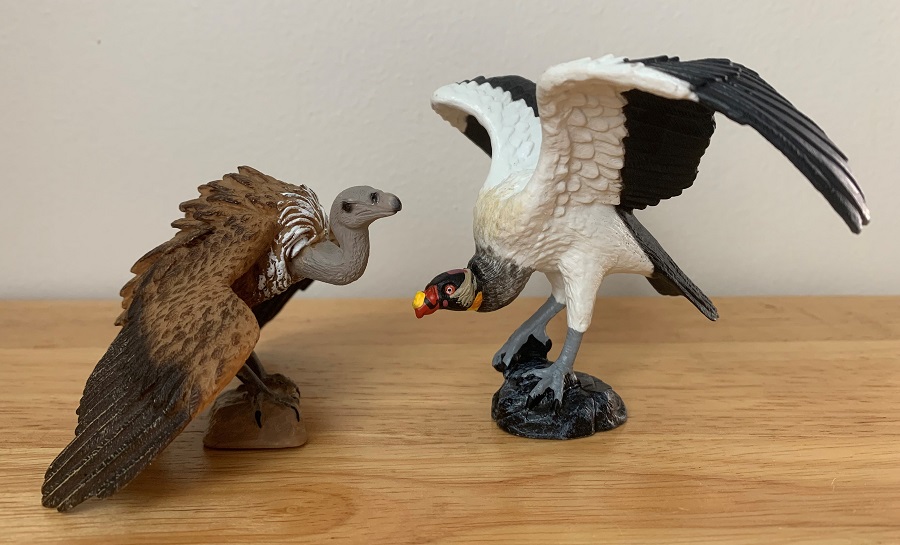
One interesting way in which the two vulture groups differ is in their approach to finding food. Old World vultures use their eyesight to find carrion, their sense of smell being poor, as it is in most birds. In contrast, most of the New World vultures have an excellent sense of smell and use it as their primary sense in finding food. The exceptions to this are the black vulture (Coragyps atratus) and the king vulture (Sarcoramphus papa). Their sense of smell is not as well developed and as a result they often follow other vultures to food sources. Today’s review is for the 2019 Safari king vulture, the only member of the Sarcoramphus genus.
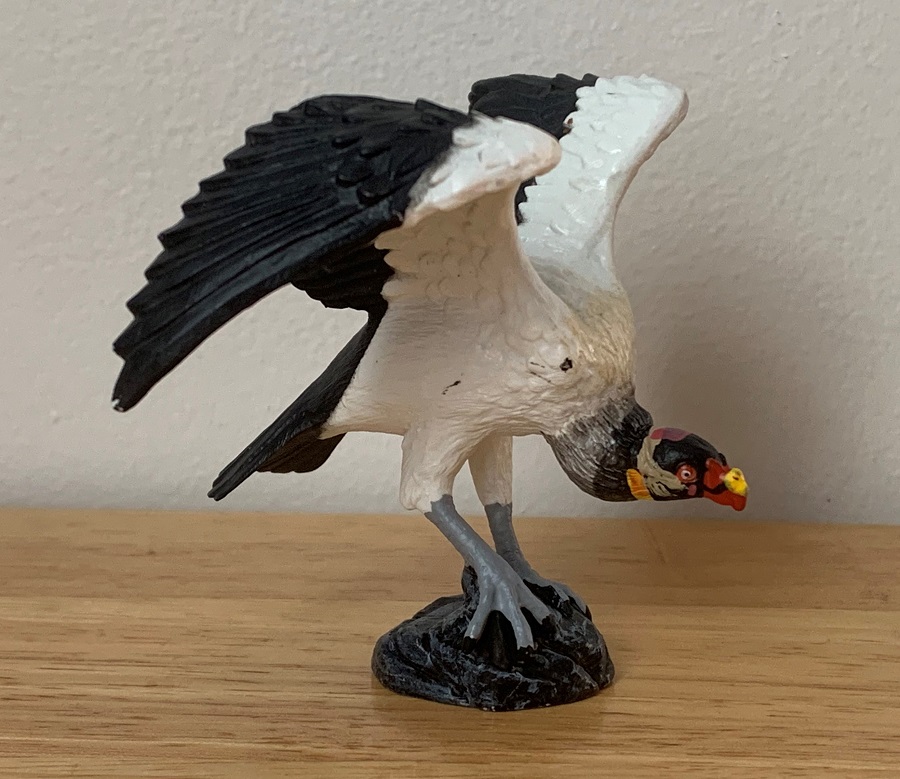
The king vulture ranges from Mexico, south to northern Argentina. After the condors it is the largest New World vulture species. The king vulture can measure up to 32” (81 cm) in length and have a wingspan of up to 7’ (2 meters). It’s difficult trying to work out the scale of this figure, given its posture and that the wings are not completely outstretched. By my best estimate the figure is 1/12 in scale but take that as a rough estimate. The figure stands about 3” (7.62 cm) tall and measures 4.75” (12 cm) wide.
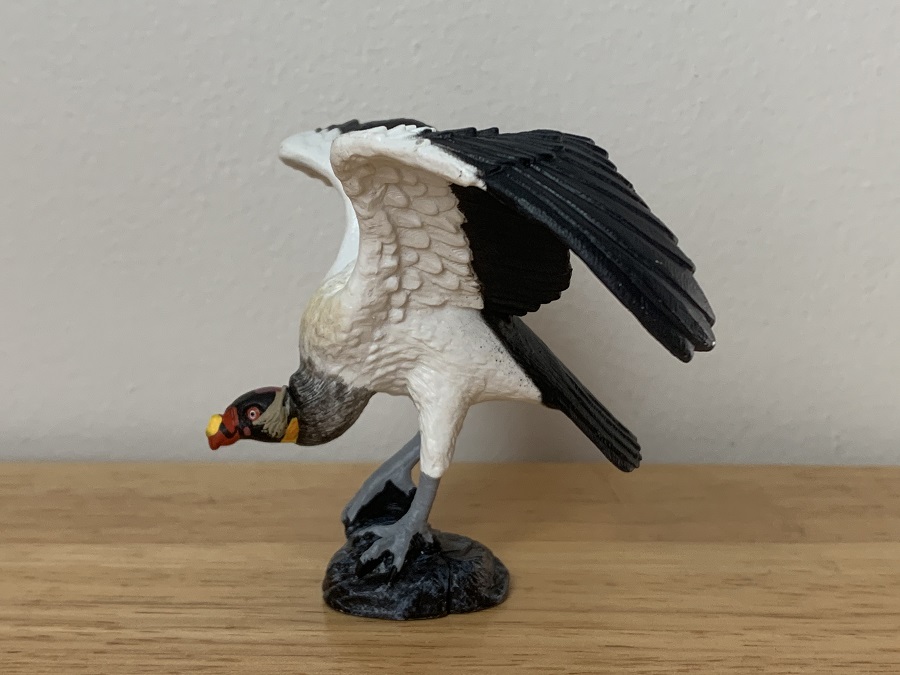
How this vulture came to be named king vulture is not entirely clear. It may have gotten the name for its ability to displace other vulture species at a carcass, but it also may have been given the name through Mayan legends about the bird. Either way, it’s a befitting name. The king vulture’s robust, hooked beak is better adapted at tearing open carcasses versus the weak bills of the other New World species. It’s also a regal looking bird, with it’s wrinkled, featherless head colored in beautiful shades of orange, yellow, red, pink and purple.
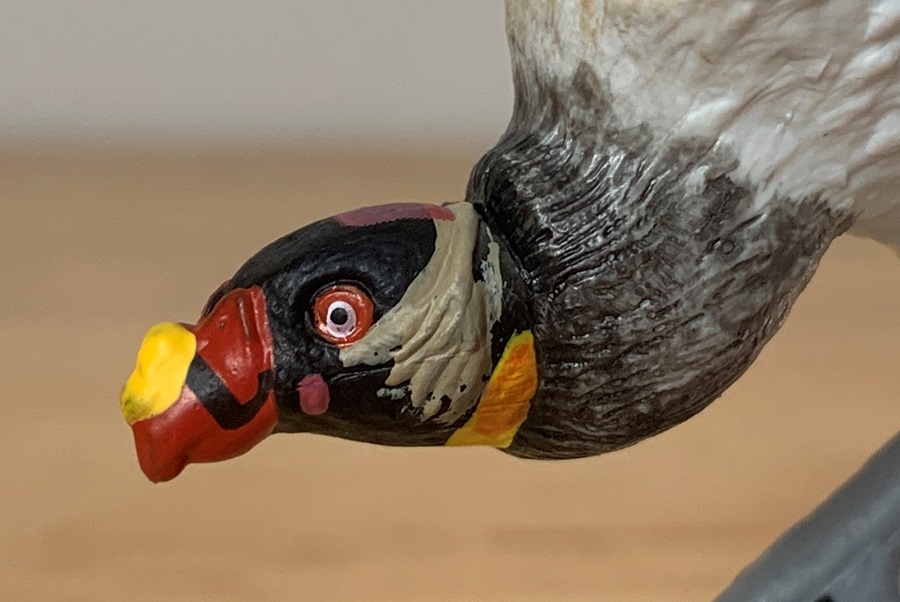
Looking at the toy we see that the red bill is decorated with a yellow crest and red cere. The head itself is black with red-ringed white eyes. Some wrinkled brown skin is sculpted around the cheeks and back of the head, a pink spot is painted on top of the head, and some orange and yellow is painted on the throat. Considering that the entire head is only 0.5” (1.27 cm) I think the likeness is very well executed.
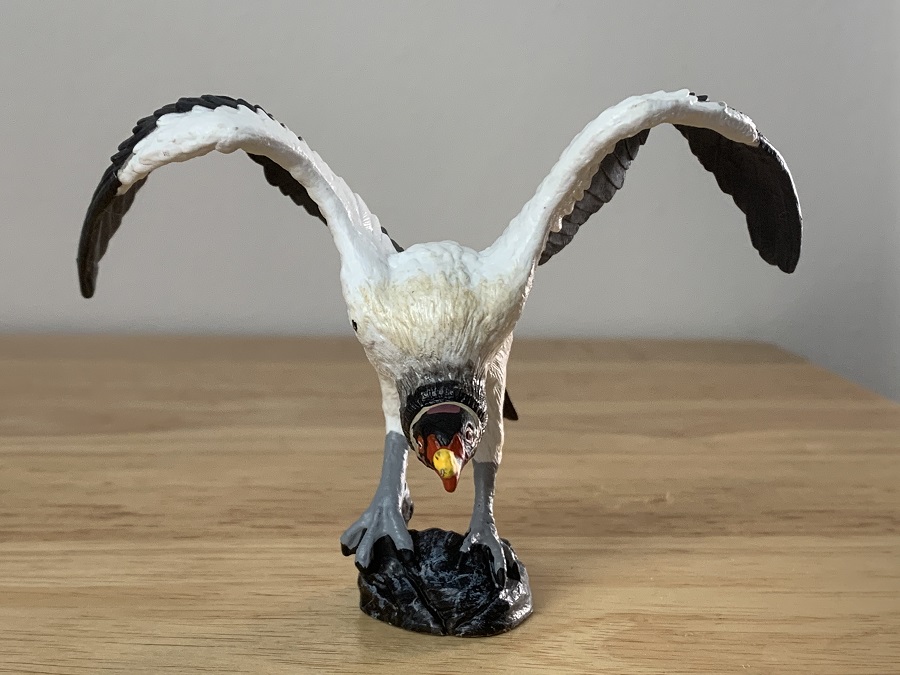
The feathered neck is painted black and gray while the body is painted white. In life the white coloration has a rose-yellow tint but that’s not conveyed here. The primary and secondary coverts and flight feathers are black, as is the tail. The feet are pale gray with black nails. The figure is presented perched on a black rock in a hunched over posture with its wings outstretched.
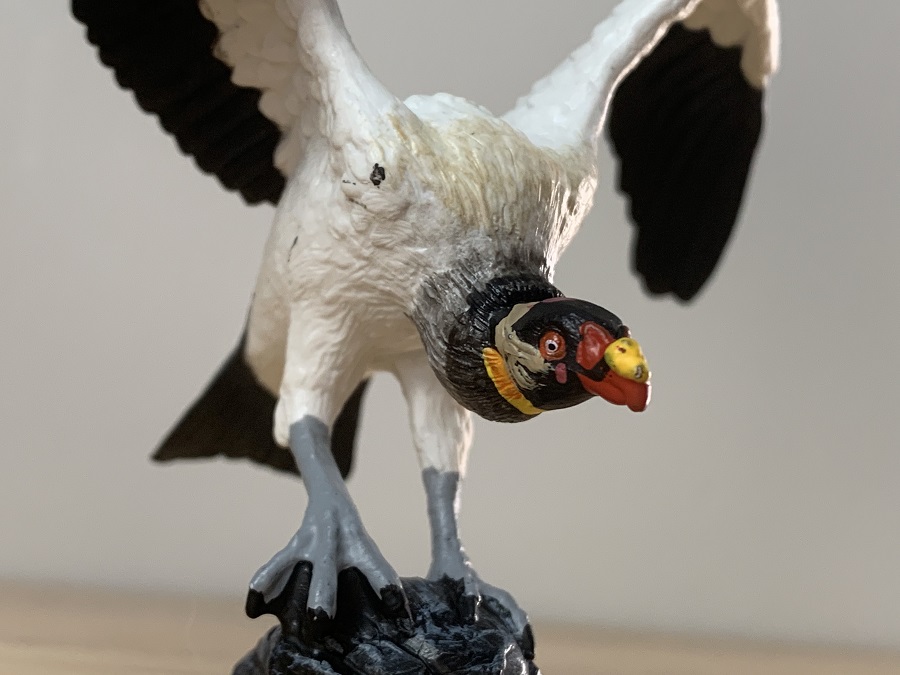
The detail work is as you should expect from Safari, with the feather detail on the wings being the obvious highlight. King vultures have a patch of bare skin where the crop is located, and that feature is absent from the figure. That said, I’m not sure that the bare skin would always be visible or if it is occasionally obscured depending on the bird’s posture, or if it has recently fed. Either way, I’m not bothered by its absence.
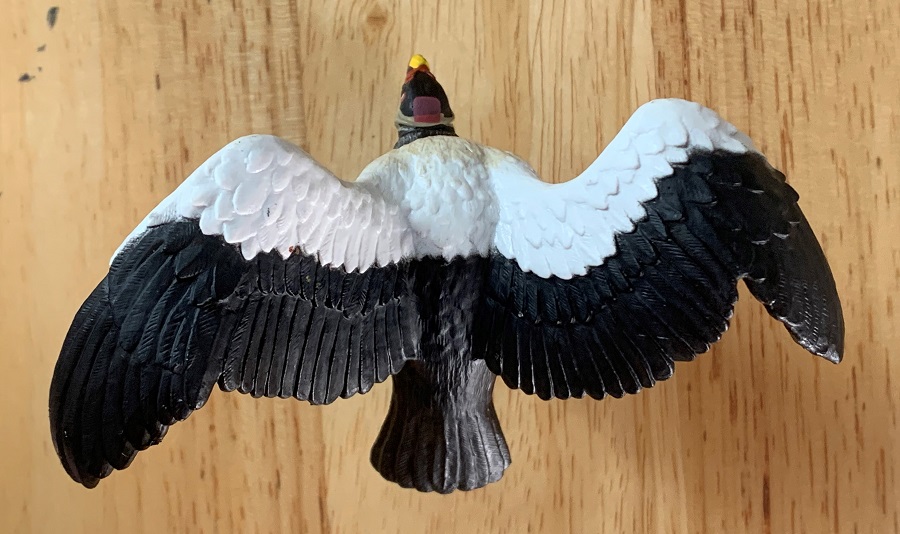
My only real complaint about the figure is the sloppy paintjob present in a few places. Although I commended the meticulous painting on the head the paint application where the feet meet the rocky base is sloppy in places. Additionally, there are some misplaced black paint marks on the white body of my figure. Such is the risk you take when buying online.

New World vultures in general are poorly represented in our hobby. A few condors have been produced but I think they’re all out of production now. I would personally love it if someone tackled the turkey and black vulture specifically. If you want this group represented in your collection, then the Safari king vulture is the most accessible option. I highly recommend it.
Disclaimer: links to Ebay and Amazon on the AnimalToyBlog are affiliate links, so we make a small commission if you use them. Thanks for supporting us!




I have to tell you Gwangi; after years of resistance, this is one of the figures that finally prompted me to start a synoptic non-arthropod collection!!!!!
Really? It’s funny how a particular figure can do that. For me it was the Schleich pangolin and spotted hyena that came in a lot of animal toys I bought for my daughter, then once the blog was launched I knew I was done for. Up until recently I only collected extinct animals and sharks.
This one is a real beauty! I don’t know why there aren’t more toys of colourful vultures. A lappet-faced vulture would be particularly nifty.
Also, congrats on your 50th ATB review!
Thanks!